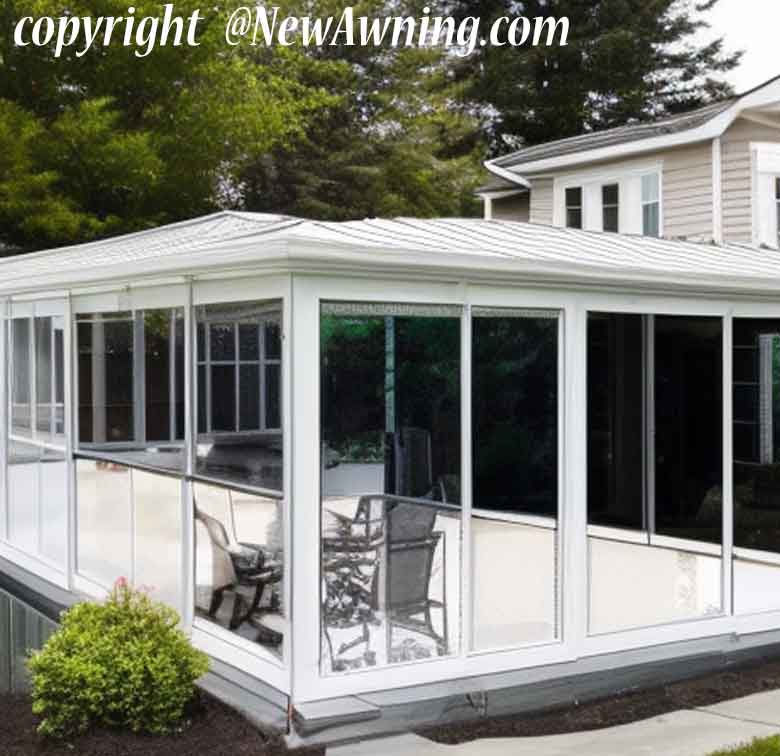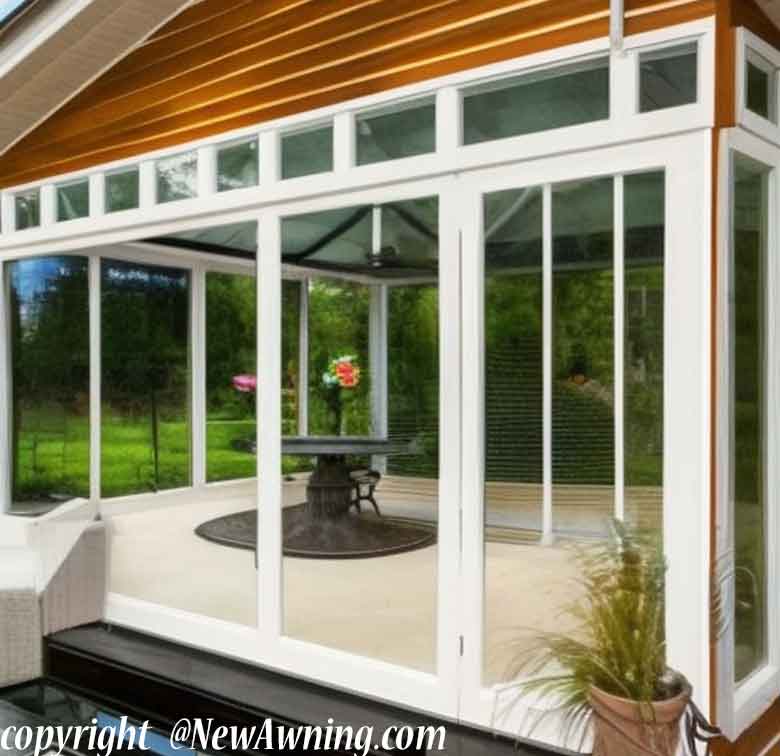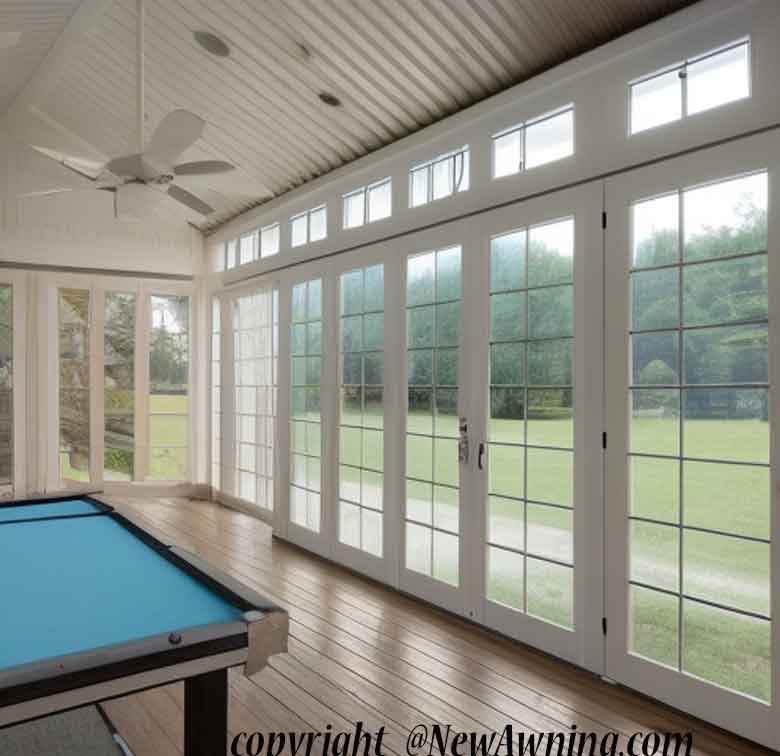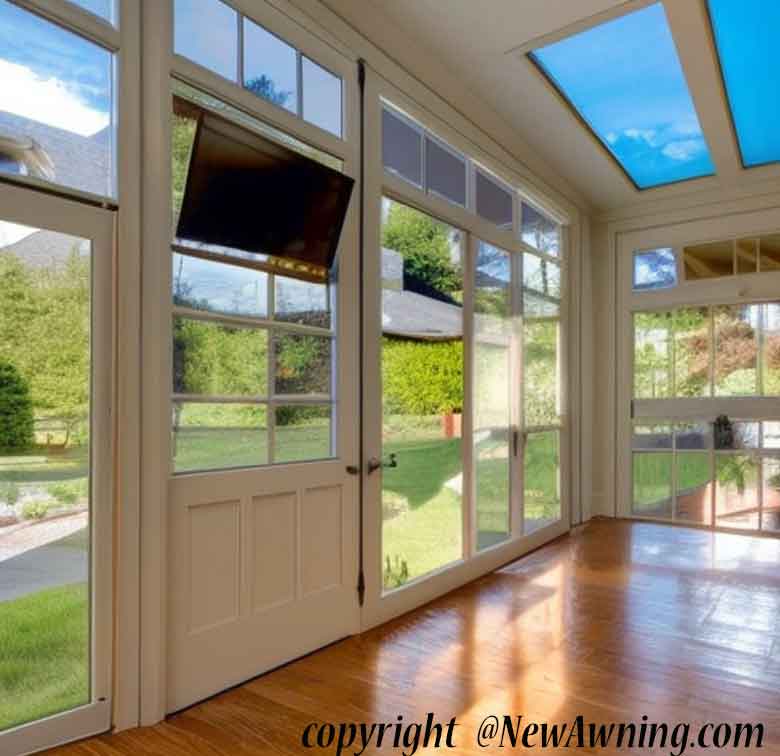Last Updated:August 01, 2025
Do you need a foundation for a screened porch or patio?

If you’re considering building a screened patio, you may be wondering if you need a foundation. The short answer is: it depends. A foundation is essentially a support system that transfers the weight of your patio to the ground. It’s important to consider whether or not you need a foundation because it will impact the overall cost and stability of your patio. In this blog post, we’ll go over the different types of foundations that can be used for a screened patio and help you determine which one is right for your specific needs.
Types of foundations for a screened patio
If you are looking to add a screen patio and need to have a foundation added, we strongly advise you to speak to a licensed contractor in your area for specific advice. We are merely homeowners who are DIYers, and we are not qualified to provide a professional opinion.The point of the information below is simply to provide a high-level overview so that you will have a starting point when speaking with someone that you hire for the job. Adding a foundation or extending the foundation to your home can be a very large chore that may require building permits. I’ve known a few people that added a foundation that would be built on later; however, this was the exception rather than what the general person could do.
Concrete slab for screened patios
A concrete slab is a popular choice for a foundation for a screened patio because it is relatively inexpensive and easy to install. To create a concrete slab foundation, a flat, solid surface is created by pouring concrete onto a prepared surface. The concrete is then allowed to cure or harden before the screened patio is built on top of it. One benefit of using a concrete slab foundation is that it is a quick and straightforward process. However, it is important to consider the soil conditions in the area before choosing a concrete slab foundation, as it may not be the most stable option in areas with high levels of moisture or clay soil.
Pier and beam foundation
A pier and beam foundation is another option for a screened patio. It consists of concrete piers that are spaced evenly across the ground and connected by wood beams. The screened patio is then built on top of the beams. This type of foundation is more expensive and time-consuming to install than a concrete slab, but it provides more stability, particularly in areas with unstable soil. Additionally, a pier and beam foundation allows for easier access to the area underneath the patio, which can be useful for plumbing or electrical work. However, it is important to regularly inspect and maintain the piers and beams to ensure the stability of the foundation.

Raised foundation
A raised foundation is a type of foundation that is built on top of the ground rather than being dug into it. It consists of a wood platform that is supported by posts or piers. To create a raised foundation for a screened patio, the area is first cleared and the ground is leveled. The posts or piers are then installed and the platform is built on top of them. This type of foundation is best suited for areas with poor soil conditions, as it provides a stable base for the patio without the need for concrete piers or a concrete slab.
One benefit of using a raised foundation for a screened patio is that it is less prone to settling over time. When soil conditions are unstable, a concrete slab or pier and beam foundation may shift or sink, causing the patio to become uneven. A raised foundation, on the other hand, is not in direct contact with the ground, so it is less likely to be affected by shifts in the soil. Additionally, a raised foundation allows for better drainage and can help prevent water damage to the patio.
However, there are also a few drawbacks to using a raised foundation. The biggest disadvantage is cost: a raised foundation is generally more expensive to install than a concrete slab or pier and beam foundation. It is also more time-consuming to install, as it requires the construction of the platform and the installation of the posts or piers. Additionally, a raised foundation may not be suitable for all types of screened patios. It is generally best suited for smaller, lighter structures, as a larger or heavier patio may require more robust support.
In conclusion, a raised foundation is a good option for a screened patio in areas with poor soil conditions or where stability is a concern. It offers a stable base that is less prone to settling, and it allows for better drainage to prevent water damage. However, it is more expensive and time-consuming to install than other types of foundations.
Factors to consider when deciding on a foundation
As I mentioned above, this should not constitute professional advice. We are not qualified for that, but rather general information based on our own experience and research. Your individual areas may be different, and this is purely to introduce some items you may wish to consider when hiring someone to add a foundation to your home.Type of soil in the area
The type of soil in the area can have a significant impact on the type of foundation that is best suited for your screened patio. Different types of soil have different levels of stability, and it is important to consider the soil conditions in your area when deciding on a foundation.
If you have stable soil, such as loamy or sandy soil, you may be able to use a concrete slab foundation. A concrete slab is a flat, solid surface made of poured concrete, and it is a popular choice for screened patios because it is relatively inexpensive and easy to install. However, if you have unstable soil, such as clay or silt, a concrete slab may not be the most stable option. Clay soil is known for its high shrink-swell potential, which means that it expands and contracts with changes in moisture levels. This can cause a concrete slab to crack or shift over time. Similarly, silt soil is prone to erosion and may not provide a stable base for a concrete slab.
If you have unstable soil, you may need to use a different type of foundation, such as a pier and beam foundation or a raised foundation. A pier and beam foundation consists of concrete piers spaced evenly across the ground and connected by wood beams. It provides more stability than a concrete slab, especially in areas with unstable soil. A raised foundation is another option for unstable soil. It is a wood platform that is built on top of the ground and supported by posts or piers. It provides a stable base for the patio without the need for concrete piers or a concrete slab.
In the end, the type of soil in the area can impact the type of foundation that is best suited for your screened patio. If you have stable soil, a concrete slab may be a good option. If you have unstable soil, such as clay or silt, a pier, and beam foundation or a raised foundation may be a better choice. It is important to consider the soil conditions in your area when deciding on a foundation to ensure the stability and longevity of your patio.

Size and weight of the patio
The size and weight of your screened patio can also impact the type of foundation that is best suited for your needs. A larger or heavier patio will require a more robust foundation to support its weight, while a smaller or lighter patio may be able to use a simpler, less expensive foundation.
If you are planning to build a large or heavily screened patio, you will need a foundation that can support its weight. A concrete slab may not be sufficient in this case, as it may not be able to handle the load. In this situation, you may need to use a pier and beam foundation or a raised foundation. A pier and beam foundation consists of concrete piers spaced evenly across the ground and connected by wood beams.
It is more stable than a concrete slab and is capable of supporting heavier loads. A raised foundation is another option for a large or heavy patio. It is a wood platform that is built on top of the ground and supported by posts or piers. It is generally the most stable option and is capable of supporting a wide range of weights.
If you are planning to build a smaller or lighter screened patio, you may be able to use a simpler, less expensive foundation. A concrete slab is a popular choice for smaller patios, as it is relatively inexpensive and easy to install. However, it is important to consider the soil conditions in your area, as a concrete slab may not be the most stable option in areas with unstable soil. In this case, you may need to use a pier and beam foundation or a raised foundation.
At the end of the day, the size and weight of your screened patio can impact the type of foundation that is best suited for your needs. A larger or heavier patio will require a more robust foundation, such as a pier and beam foundation or a raised foundation, while a smaller or lighter patio may be able to use a simpler, less expensive foundation, such as a concrete slab. It is important to consider the size and weight of your patio when deciding on a foundation to ensure that it is stable and capable of supporting the load.
The climate in the area
The climate in the area where you live can also impact the type of foundation that is best suited for your screened patio. Different climates have different weather patterns and environmental conditions, and it is important to consider these factors when deciding on a foundation.
If you live in an area with extreme weather conditions, such as heavy rain or snow, you will need a foundation that can withstand these conditions. A concrete slab may not be the best choice in this case, as it is prone to cracking and shifting in areas with freeze-thaw cycles. In this situation, you may need to use a pier and beam foundation or a raised foundation.
A pier and beam foundation consists of concrete piers spaced evenly across the ground and connected by wood beams. It provides more stability than a concrete slab and is less prone to cracking or shifting in extreme weather conditions. A raised foundation is another option for areas with extreme weather conditions. It is a wood platform that is built on top of the ground and supported by posts or piers. It is generally more durable and able to withstand a wide range of weather conditions.
If you live in an area with mild weather conditions, such as low levels of precipitation and minimal temperature fluctuations, a concrete slab may be a good option for your screened patio. A concrete slab is relatively inexpensive and easy to install, and it is capable of handling the weight of a patio in most mild weather conditions. However, it is still important to consider the soil conditions in your area, as a concrete slab may not be the most stable option in areas with unstable soil.

Ultimately, the climate in the area where you live can impact the type of foundation that is best suited for your screened patio. If you live in an area with extreme weather conditions, you may need to use a more robust foundation, such as a pier and beam foundation or a raised foundation, to ensure the stability and durability of your patio. If you live in an area with mild weather conditions, a concrete slab may be a good option, but it is still important to consider the soil conditions in your area.
